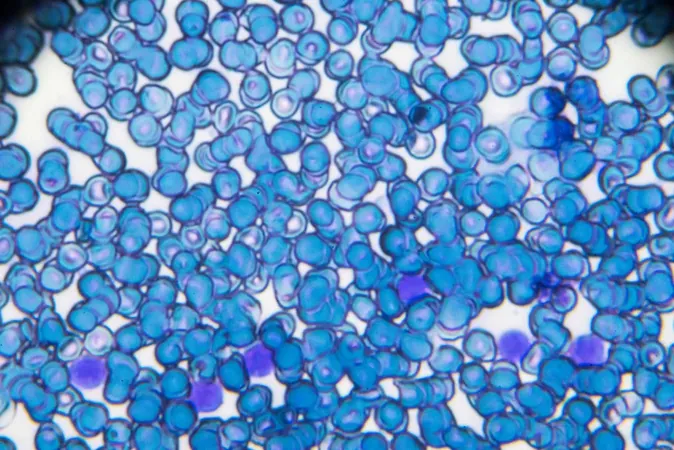
Revolutionary Discovery in Newborn Liver Cells Could Transform Pediatric Gene Therapy
2025-09-01
Author: Siti
Unlocking the Secrets of Newborn Liver Cells
A groundbreaking study published in the *Journal of Hepatology* reveals an astonishing fact: only 15-20% of specific liver cells called clonogenic hepatocytes in newborn mice are responsible for over 90% of the liver's mass. This discovery by researchers at the San Raffaele Telethon Institute for Gene Therapy could pave the way for more effective treatments in pediatric gene therapy, particularly for inherited liver diseases.
Advanced Technologies Illuminate Liver Cell Dynamics
The research team utilized cutting-edge techniques like single-cell and spatial transcriptomics, clonal tracing, and mathematical modeling. This sophisticated approach allowed them to unveil how these crucial hepatocytes proliferate and mature post-birth, including identifying the molecular signals that govern their activity. Dr. Michela Milani, a co-first author, stated, "Using spatial transcriptomics, we captured the precise localization and transcriptional identity of hepatocytes during postnatal liver growth, providing an unprecedented view into their development."
Timing is Everything in Gene Therapy
The study discovered that gene editing via homology-directed repair (HDR) is notably more effective in clonogenic hepatocytes, resulting in a more significant area of gene-edited liver at the end of growth. In contrast, the spread of lentiviral vectors across hepatocytes is more uniform but is impacted by the cells' maturation and location within the liver. Specifically, during the later developmental stages, higher proteasome activity reduces vector uptake, highlighting the importance of timing and cell identity for successful gene therapy.
Overcoming Barriers for Better Gene Delivery
Notably, researchers found that pre-treating cells with a proteasome inhibitor can enhance lentiviral transduction in adult hepatocytes. Dr. Francesco Starinieri, another co-first author, remarked, "Understanding that certain areas of the liver become less receptive to gene transfer as they mature allows us to strategically determine both the target cells and the optimal treatment timing." This discovery offers potential for overcoming limitations in gene delivery.
A New Perspective on Liver Growth and Treatment
Another significant finding was the presence of a specialized tissue niche in neonatal livers where clonogenic hepatocytes are situated near hematopoietic progenitor cells. This close proximity suggests a shared nexus of growth signals, offering exciting new avenues for regenerative medicine.
Towards Lasting Solutions for Pediatric Patients
Dr. Alessio Cantore, the senior author of the study, emphasized, "This research not only enhances our understanding of liver maturation but also highlights how early interventions can provide durable corrections for genetic diseases." By pinpointing the specific hepatocytes that drive liver growth and understanding how they respond to gene therapy, researchers are set to develop innovative and long-lasting therapies aimed at helping children battling inherited liver diseases.
This vital discovery sheds light on the mechanics of liver growth and maturation, ushering in a new era of targeted and effective pediatric gene therapies. With the potential to change countless lives, the research marks a significant milestone in the field of gene therapy.


 Brasil (PT)
Brasil (PT)
 Canada (EN)
Canada (EN)
 Chile (ES)
Chile (ES)
 Česko (CS)
Česko (CS)
 대한민국 (KO)
대한민국 (KO)
 España (ES)
España (ES)
 France (FR)
France (FR)
 Hong Kong (EN)
Hong Kong (EN)
 Italia (IT)
Italia (IT)
 日本 (JA)
日本 (JA)
 Magyarország (HU)
Magyarország (HU)
 Norge (NO)
Norge (NO)
 Polska (PL)
Polska (PL)
 Schweiz (DE)
Schweiz (DE)
 Singapore (EN)
Singapore (EN)
 Sverige (SV)
Sverige (SV)
 Suomi (FI)
Suomi (FI)
 Türkiye (TR)
Türkiye (TR)
 الإمارات العربية المتحدة (AR)
الإمارات العربية المتحدة (AR)